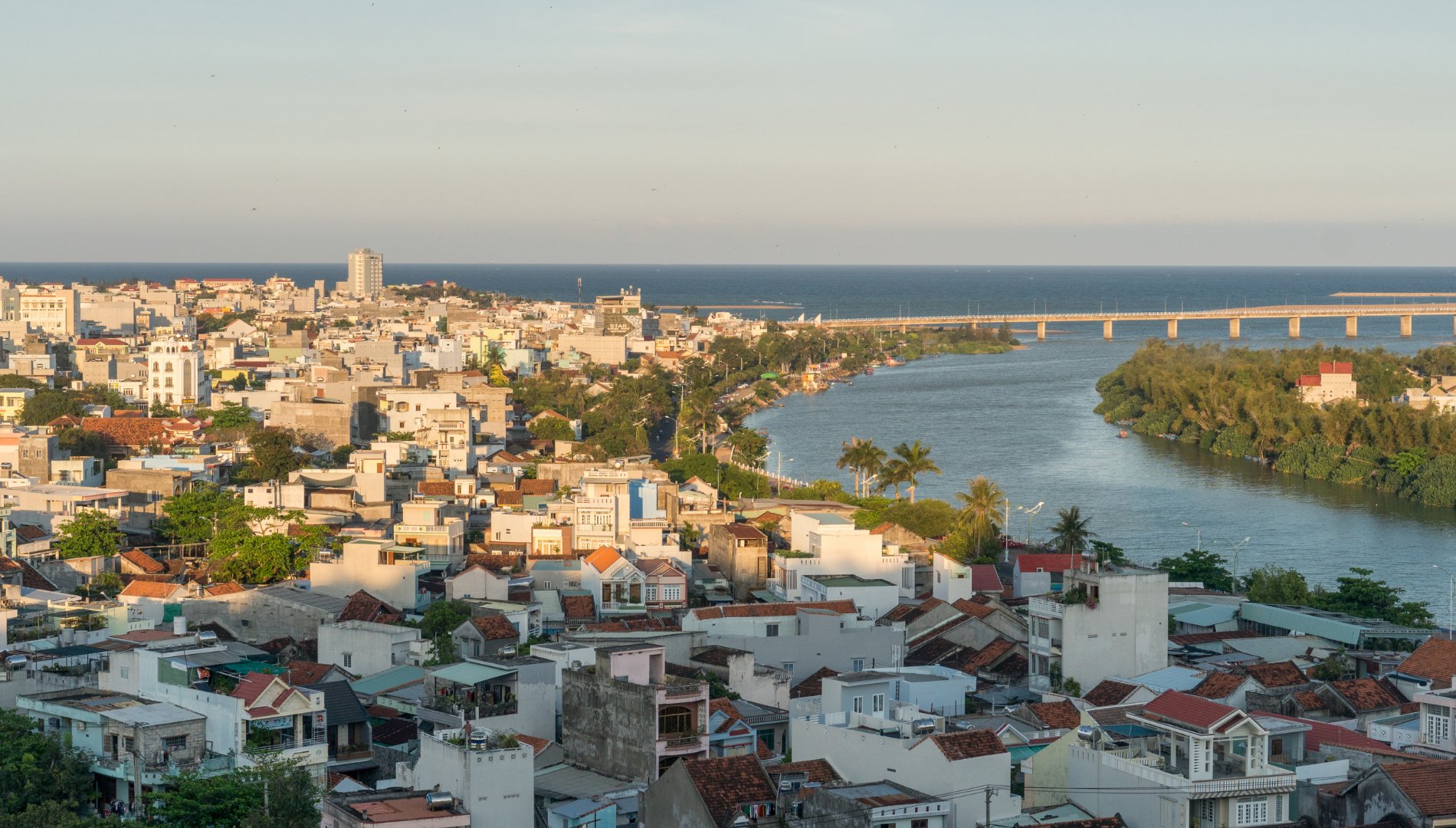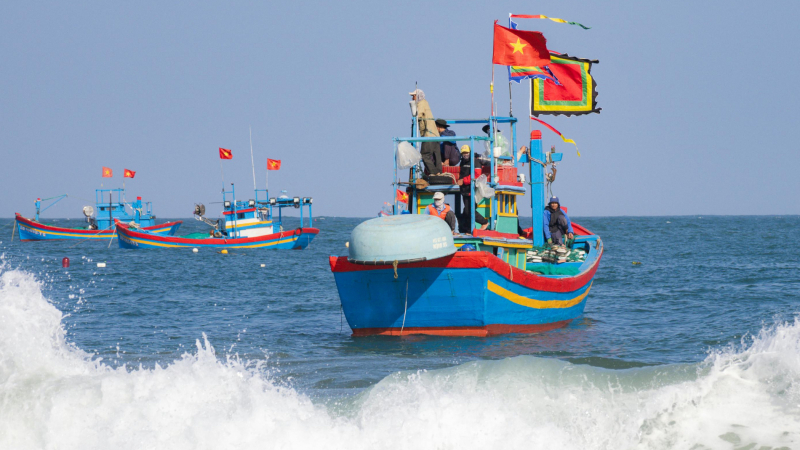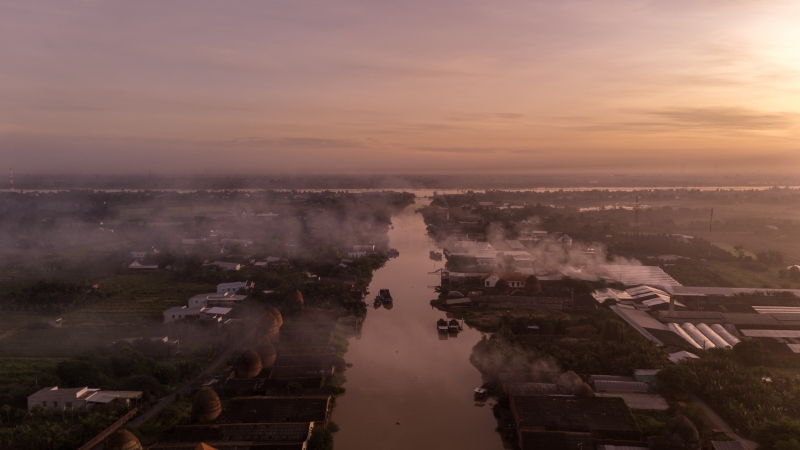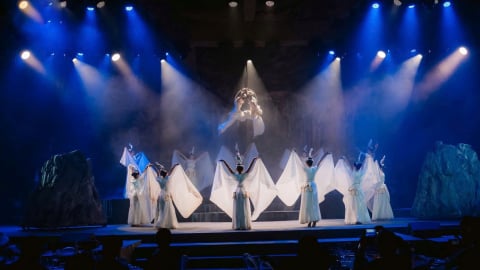"The Ba River flows down to Da Rang
Who loves Dak Lak as much as Phu Yen..."
With an impressive length of more than 400 km, the Ba River is not only one of the largest rivers in Central Vietnam but also a witness to history, an invisible thread connecting space and time on the S-shaped strip of land. Originating from the majestic Central Highlands, where the vast primeval forests embrace eternal mysteries, the tireless flow of the Ba River has created a journey full of vitality.

Blood flow
Originating from Ngoc Ro peak (Kon Tum) at an altitude of 1,549 m, this 388 km long river winds through three provinces of Kon Tum, Gia Lai, Phu Yen and then flows into the East Sea at Da Dien estuary (Tuy Hoa city). The journey of the Ba River is a vibrant epic, where history and culture blend together, creating a colorful picture of the people and this land.
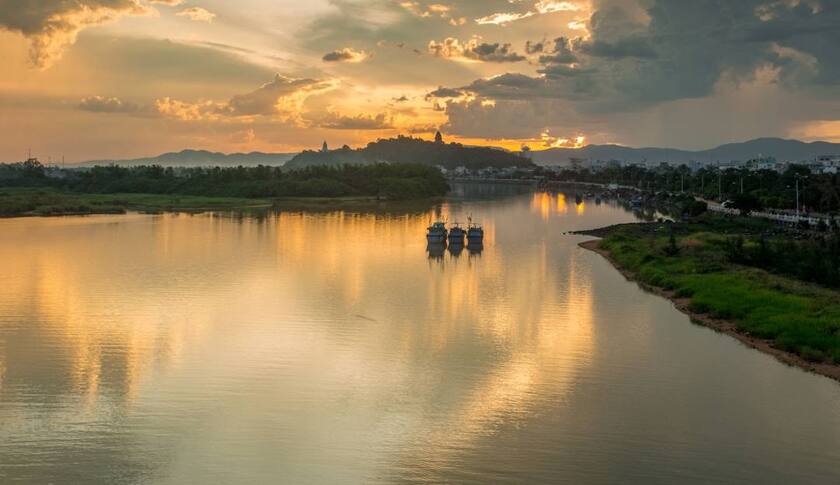
The famous river in Phu Yen, originating from Kon Tum, flows 380km long, like a river that is forever young.
Right from its name, the Ba River tells stories about the connection between people and the flow. Upstream, the river is called Ea Pa and then La Pa, which in the Ba Na language means "a lot of water, a big stream" - reflecting its majesty and abundant water source. When flowing downstream, to the Dong Cam dam area (Hoa Hoi commune, Phu Hoa district), the river is called Da Rang, based on the name Ea Drang in the Cham language, which means "river of reeds".
These names are not only place names but also evidence of the presence of indigenous cultures, demonstrating people's understanding and respect for the mother river. With a large total basin of 13,900 km² and an average water flow of 257 m³/s at Cung Son (Son Hoa, Phu Yen), the Ba River is truly the lifeblood of the primeval forests, bringing prosperity to the lands and nurturing millions of people through many generations.

The journey from forest to sea is a connection of vivid cultural and historical stories of the identities of riverside communities.
History has recorded that since ancient times, the Ba River has played an extremely important role in the formation and development of ancient civilizations. Evidence is the remaining Champa relics such as Dong Mieu, Thanh Ho, and Nhan Tower on the banks of the Ba River in Phu Yen, showing the prosperity and importance of the river to the economic, cultural and spiritual life of ancient residents. Not only that, the tangible and intangible cultural treasures of the ethnic groups living along both banks of the river are imbued with the breath and inspiration of the Ba River.
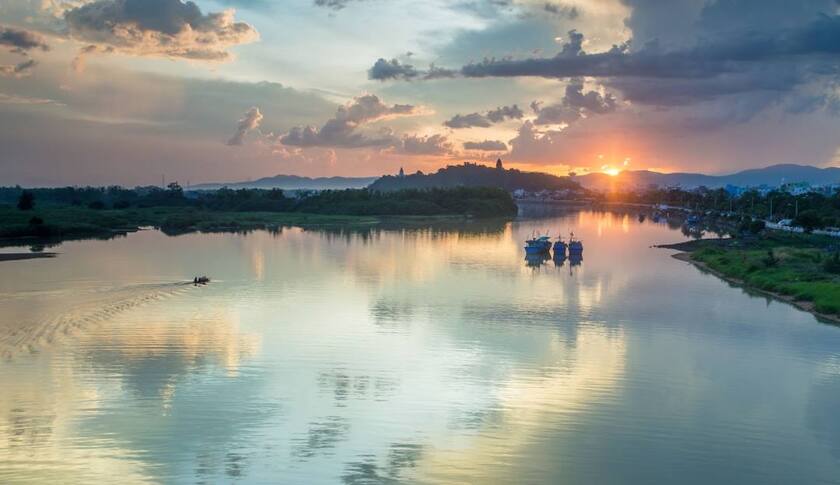
Originating from the Central Highlands, the flow of the Ba River has nurtured civilizations and formed unique customs and practices.
The Ba River is not only a natural artery but also an important waterway in history. Under the Champa and Nguyen dynasties, this river was a strategic route, connecting and promoting the development of the marine-forest economy, creating a bustling trading space. In particular, the folk song "Who comes back and tells the source/ Send young jackfruit down, send flying fish up" has become a vivid proof of the close trade relationship and connection between the residents of the mountainous and lowland regions, sharing the same water, sharing the same historical circumstances.
Fall in love where the Ba River meets the sea
Along the cool streams in the heart of the Central Highlands, where the Ba River flows, are vast primeval forests. The river is not only the lifeblood of countless species of plants and animals, creating a rich ecosystem with hundreds of rare ancient trees such as ironwood, rosewood, and valuable medicinal plants, but also a symbol of community connection.
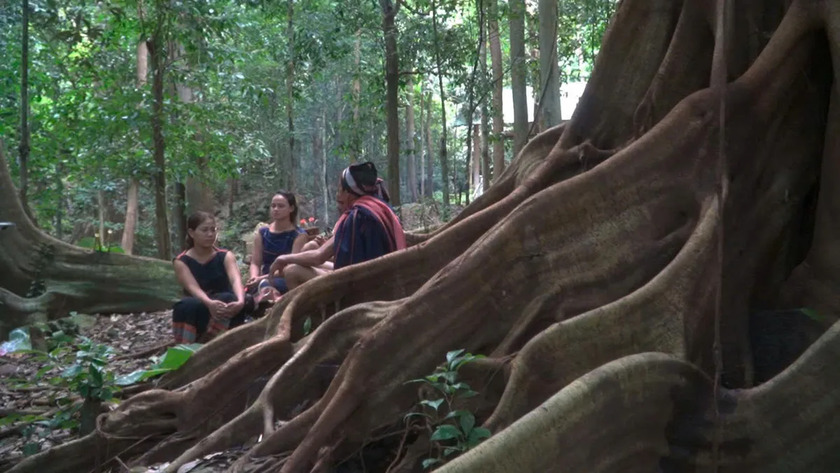
The river is the lifeblood of countless species of plants and animals, creating a symbol of community connection.
As the Ba River winds its way through the valleys, it becomes a gathering place for ethnic communities. Since ancient times, people have lived along its banks in search of food, water and natural resources. Daily activities such as fishing and farming are closely linked to the river. Following the flow through the provinces of Dak Lak, Gia Lai and Phu Yen, we can see more clearly the value of community cohesion that the river brings. The Ba River has nurtured many ethnic groups such as the Ede, Ba Na, Gia Rai in Dak Lak and the Kinh and Cham in Phu Yen. The people here are closely attached to the river, from fishing to using river water for daily activities. Small boats glide gently on the water, carrying diligent fishermen, creating a picture of a peaceful and idyllic life in the mountains and forests.

As the Ba River winds through the valleys, it becomes a gathering place for ethnic communities.
In the past, the Ba River was an important trade route, where many trading activities took place, exchanging agricultural and aquatic products. Villages along the river were built and developed thanks to the abundant water source and rich natural resources. Communities living along the Ba River created a strong network of cultural, economic and social links.
Each ethnic group has its own customs, festivals and arts, but they all have in common that they always consider the Ba River as the mother river, providing a source of life and containing spiritual life. Therefore, every year, the villages hold a festival to worship the river, praying for the river to always be clean and for a bountiful harvest.
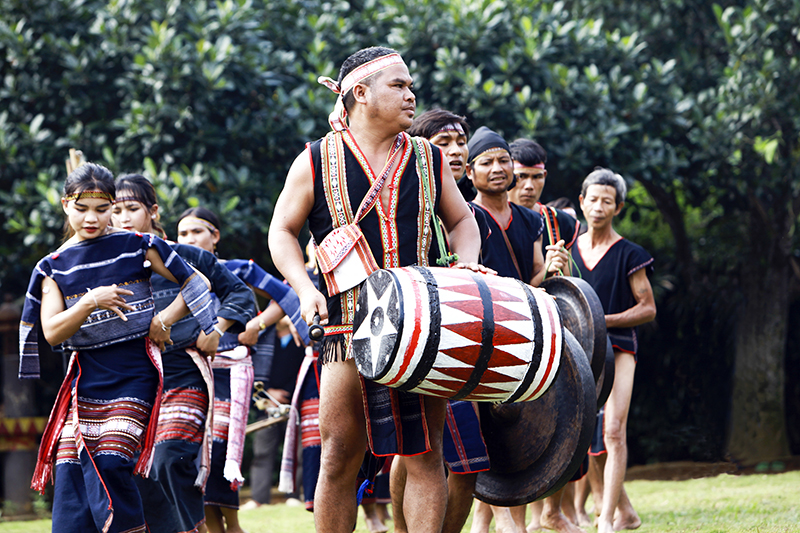
People here are closely attached to the river, from exploiting aquatic products to using river water for daily activities...
At Ba River during the festival season, visitors seem to be lost in a world of colorful cultural diversity, from the colorful costume patterns to the solemn echoes of gongs in the middle of the forest. At this time, communities gather on the river banks, perform traditional dances together, share and blend their unique customs and practices, creating a cultural space rich in identity.
Along the banks of the Ba River are cultural heritages created and preserved over time. From majestic communal houses, stilt houses, long houses with unique architecture of ethnic minorities to ancient villages attached to both banks of the river in the lowlands.

Along the stream, many cultural stories are opened before the eyes of tourists.
Downstream, anyone can see the lushness and richness of the Tuy Hoa Delta, where the largest rice granary in the Central region is fertilized by the Ba River's alluvium every year. The riverside flower villages are tended year-round, creating a peaceful and romantic picture. Where the Ba River flows into the sea, the intersection of two freshwater and saltwater sources creates a diverse ecosystem, suitable for aquatic species, giving visitors the opportunity to enjoy rustic dishes, blending rich flavors.
Developing experiential tourism along the Ba River, from the Central Highlands to the coast, not only brings significant economic benefits but also helps preserve and promote the unique cultural heritage of this land. The harmonious connection between the forest and the sea through the Ba River not only creates a beautiful natural picture but also reflects the close, sustainable relationship between people and the environment, turning the Ba River into a precious gem of Central Vietnam.





